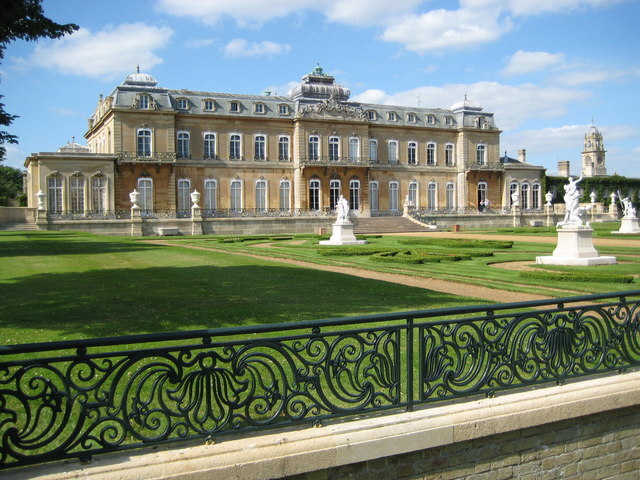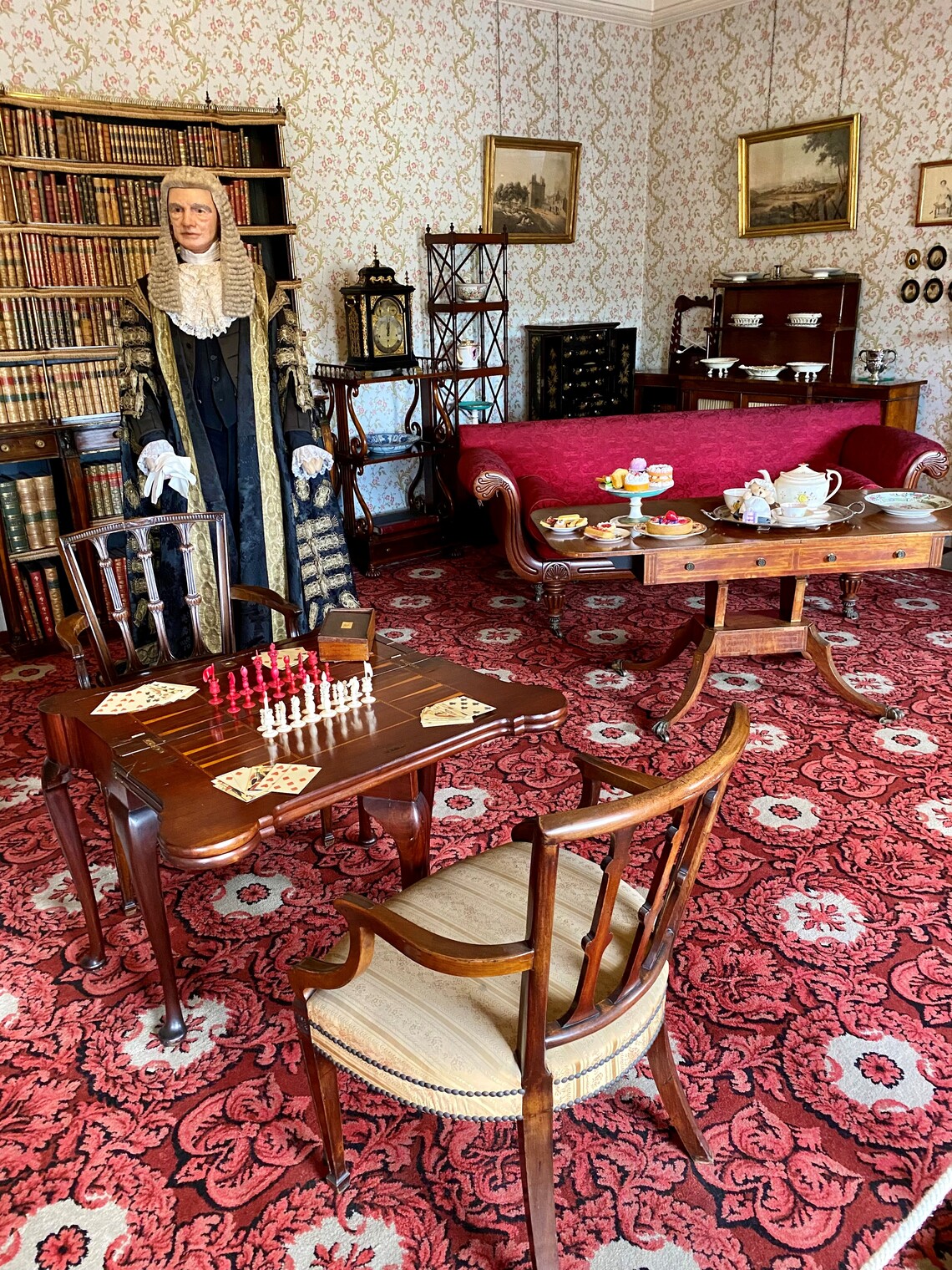Vist to Wrest Park, Silsoe, in August 2021
A small group of our members made a visit to the Archaeological Stores of English Heritage at Wrest Park, Bedfordshire, in August at the end of the pandemic restrictions. It was lovely to be able to be together with friends again.
We chose a local site so that we could make it a self-drive visit and it was a lovely day. The gardens and café were very busy, but our group had exclusive time with a guide to go around the stores.
We met at the Dairy Sculpture Gallery before being taken into the courtyard at the back of the House and then into a vast storage depot. The artefacts in here are packed from floor to ceiling and we went past a huge variety of man-made items taken from English Heritages properties around the country.
The guide told us about the preservation, storage needs and details of their origins. We learnt about wooden, metal, paper, fabric, glass and stone artefacts, each fascinating with its story and the designer or craftsman who made it.
Conservation and preservation are vital to keep these artefacts in good condition and inspection of each item is carried out to a very high standard. The collection of doors alone is quite remarkable!
We were told that the tours are changed on a regular basis, so that different items can be appreciated if you go several times. This encouraged us to consider another such visit in the future.
Diane Bell
Image above is by Nigel Cox, reproduced under the Creative Commons Attribution-Share Alike 2.0 Generic license
Spring Holiday to Lancaster, April 2024 by Ray Mayhew
Ray and other members and friends of the association enjoyed a holiday to ‘Lancashire Hotspots’ in April.
Twenty-nine holidaymakers, BNTA members and others, set off in late April on a coach heading North West. Both outgoing and return journeys were broken by a place of interest, each included a garden. Just outside Lancaster a hotel was our home for the holiday. Here very good food accompanied interesting conversations and lots of laughter. Forecasts of a week of wet weather gave way to the reality of clear skies, often blue, with a warming sun to counter cool breezes.
Robert Gillow and his famed furniture featured in three of the places visited. Leighton Hall, originally a relatively modest gentleman’s country home, was turned into an apparently large gothic castle by Gillow adding two wings to make a wide frontage, but it remained only 2 rooms deep. It is an effective deception to all arriving at the front door. The Hall has a stunning view of the Lake District with its mountain ridges receding to the horizon. Unlike many a stately home it still has Gillow family members in residence, so no areas are roped off. We were encouraged to sit on any of the chairs whenever we wished and also handle any of the items on view. Of course some of the furniture was produced by Gillow’s workshop. The sheen on them was perfect with glowing tropical hardwood colours and striking grain patterns.
Later the same day Lancaster Maritime Museum showed Robert Gillow to be a ship owner. Sadly such a creative genius was not immune from the practice of the time. His craft was used to pick up slaves from Africa and take them across the Atlantic. Some he used to find, fell and cut up the hardwood trees. Others he would sell to plantation owners before returning with the haul of timber.
In Lancaster on another day we were at the Judges Lodging House with more Gillow furniture to admire alongside the biggest rocking horse I’ve seen. It can seat three children and indicated that Judges took their family with them when they were in session at Lancaster Court.
Various venues had a garden attached, which were greatly enjoyed. Well, after all we are National Trust members! Two other attractions were surprisingly able to keep most of us transfixed.
It did not seem many would spend much time in a fossil gallery. Once inside we and other visitors spent considerable time studying the specimens where you could clearly see what type of plants or animals were fossilised. James Bateman, the owner of Biddulph Grange, was a religious and scientific man who collected the fossils and grouped them in prehistoric ages of their formation, equating them with the days of the biblical creation story.
The Lakeland Motor Museum is not just for ‘petrol heads’. It happily drew us all down memory lane. Not only were there cars and motorbikes from every decade of our lives, there were shop fronts and merchandise reminiscent of our earlier years, evoking many memories.
As with previous BNTA holidays a good time was had by all and there was a wide range of interesting venues to visit.


